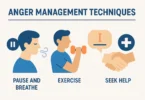Life is unpredictable. From sudden career changes to unexpected challenges in personal relationships, our ability to adapt and think flexibly determines how well we navigate these shifts. Cognitive flexibility—the mental agility to shift perspectives, embrace new ideas, and adjust to changing circumstances—plays a crucial role in personal growth, problem-solving, and overall well-being.
When you cultivate cognitive flexibility, you break free from rigid thinking patterns, making it easier to handle stress, improve decision-making, and foster creativity. Whether it’s overcoming setbacks, adjusting to new environments, or learning new skills, the ability to reframe situations and explore different solutions makes life’s uncertainties less overwhelming. In this article, we’ll explore the science behind cognitive flexibility, how it differs from a fixed mindset, and practical strategies to enhance this vital skill for greater resilience and success.
Headlines
What is Cognitive Flexibility and Why Does It Matter?
How to Train Your Mind for Cognitive Flexibility
- Practical Exercises to Improve Flexible Thinking
- The Role of Emotional Intelligence and Cognitive Control
- Strategies to Improve Emotional Intelligence and Cognitive Control for Greater Flexibility
Applying Cognitive Flexibility in Real Life
- Cognitive Flexibility in Decision-Making and Problem-Solving
- Strategies to Improve Cognitive Flexibility in Decision-Making and Problem-Solving
- Building Long-Term Resilience Through Cognitive Adaptability
What is Cognitive Flexibility and Why Does It Matter?
The Science Behind Cognitive Flexibility
Cognitive flexibility is deeply rooted in how the brain processes information, adapts to changes, and forms new connections. This ability is crucial for problem-solving, creativity, and handling life’s uncertainties. Let’s explore the neuroscientific foundation of cognitive flexibility and how the brain enables adaptable thinking.
Role of the Prefrontal Cortex and Neural Pathways
The prefrontal cortex (PFC)—located at the front of the brain—is responsible for higher-order thinking, decision-making, and adaptability. It plays a critical role in cognitive flexibility by allowing us to:
- Shift between different tasks or perspectives effortlessly.
- Override habitual responses when new information is introduced.
- Regulate emotions and behaviors based on changing circumstances.
Studies in cognitive neuroscience suggest that the dorsolateral prefrontal cortex (DLPFC) is particularly involved in flexible thinking. Damage or dysfunction in this area can lead to rigid thought patterns, making it harder for individuals to adapt to new situations.
Neural pathways also play a crucial role. The brain’s ability to rewire itself—known as neuroplasticity—is what allows cognitive flexibility to develop. When we engage in new experiences or problem-solving tasks, our brain strengthens existing neural connections and creates new ones, enhancing our ability to think flexibly.
How Brain Plasticity and Synaptic Connections Shape Adaptability
Neuroplasticity refers to the brain’s ability to reorganize itself by forming new neural connections throughout life. This adaptability is crucial for:
- Learning new skills: When we challenge our brain with new information, we create and reinforce neural pathways that support flexible thinking.
- Problem-solving: Exposure to diverse experiences strengthens the brain’s ability to switch between different thought processes.
- Resilience in stressful situations: A more adaptable brain can regulate emotions effectively and make rational decisions under pressure.
At the cellular level, synaptic connections between neurons play a fundamental role in cognitive flexibility. Synapses act as bridges that transmit signals between neurons. The more we practice adaptability—whether by learning a new language, solving puzzles, or engaging in creative activities—the stronger these connections become.
The Impact of Cognitive Load on Flexibility
Cognitive load refers to the amount of information the brain is processing at any given time. When cognitive load is too high (due to stress, multitasking, or information overload), cognitive flexibility can decline. The brain struggles to shift between tasks or adjust to new perspectives when it is overwhelmed.
Ways to reduce cognitive load and enhance flexibility:
- Practicing mindfulness: Helps regulate attention and reduce stress, allowing for more adaptable thinking.
- Engaging in single-tasking: Improves focus and strengthens neural pathways responsible for cognitive control.
- Building strong sleep habits: Sleep is essential for memory consolidation and neuroplasticity, ensuring the brain remains adaptable.
Cognitive Flexibility vs. Fixed Mindset
Cognitive flexibility and mindset are deeply intertwined, influencing how we approach challenges, process new information, and adapt to change. The contrast between a flexible thinker and someone with a fixed mindset can determine success in learning, problem-solving, and personal growth.
Let’s explore the differences and why shifting toward a growth-oriented, adaptable mindset is essential.
Insights from Carol Dweck’s Growth Mindset Theory
Carol Dweck, a renowned psychologist, introduced the Growth Mindset vs. Fixed Mindset concept, which explains how our beliefs about intelligence and abilities shape our behaviors.
- Fixed Mindset: People with a fixed mindset believe that intelligence, talents, and abilities are static. They tend to avoid challenges, fear failure, and resist change.
- Growth Mindset: Those with a growth mindset see abilities as malleable and believe that effort, learning, and adaptation can lead to improvement over time.
How this relates to cognitive flexibility:
- Cognitive flexibility thrives on the belief that the brain can adapt and change (neuroplasticity). Those with a growth mindset naturally embrace this adaptability.
- A fixed mindset reinforces rigid thought patterns, making it harder to switch between perspectives, try new problem-solving strategies, or adjust to unexpected situations.
For example, someone with cognitive flexibility can adjust their study techniques if their current approach isn’t working, while a fixed-mindset individual may give up, believing they are simply “bad at learning.”
Examples of How a Fixed Mindset Limits Adaptability, While Cognitive Flexibility Fosters Growth
A lack of cognitive flexibility can manifest in many ways:
- Resistance to change: Someone in a rigid mindset may struggle with new workplace policies, preferring to stick to what they already know.
- Difficulty solving problems: Fixed thinkers often stick to old strategies, even when they’re ineffective, because they fear trying something unfamiliar.
- Emotional rigidity: They may struggle with emotional regulation, reacting negatively to criticism or unexpected setbacks.
On the other hand, cognitive flexibility allows for adaptive thinking and innovation:
- In education: Students with flexible thinking adjust their study habits based on what works best, improving learning outcomes.
- In business and leadership: Leaders with cognitive flexibility are better at adapting to industry changes, shifting business strategies, and responding to crises.
- In personal relationships: Flexible thinkers navigate conflicts more effectively, considering multiple perspectives instead of sticking to a rigid view.
How to Shift from a Fixed Mindset to a Flexible, Growth-Oriented Mindset
If you recognize fixed-mindset tendencies in yourself, don’t worry—mindsets can change with practice. Here’s how:
- Reframe challenges as opportunities: Instead of viewing difficulties as signs of failure, see them as chances to grow and learn.
- Practice perspective-taking: Try to see situations from different viewpoints, which strengthens cognitive flexibility and reduces rigid thinking.
- Engage in learning-based activities: Pursuing new skills (such as learning a language, playing an instrument, or problem-solving exercises) trains the brain to embrace adaptability.
- Embrace failure as feedback: Understand that mistakes are essential for growth, and learning from them makes you more resilient.
Why a Growth Mindset Beats a Fixed Mindset Every Time
How to Train Your Mind for Cognitive Flexibility
Practical Exercises to Improve Flexible Thinking
Cognitive flexibility is like a mental muscle—the more you exercise it, the stronger and more adaptable it becomes. By incorporating targeted activities into your daily routine, you can enhance your brain’s ability to shift perspectives, solve problems creatively, and adapt to new situations with ease.
Here are some powerful exercises that can train your brain for better flexibility and adaptability.
1. Engage in Perspective-Taking Exercises
One of the core aspects of cognitive flexibility is the ability to see things from multiple angles. To develop this skill, try these activities:
- Debate both sides of an issue: Pick a controversial topic and argue both perspectives, even if you don’t personally agree with one side. This forces your brain to step outside rigid thinking patterns.
- Empathy training: Imagine yourself in someone else’s situation. How would they feel? What would their reasoning be? This can improve both emotional intelligence and flexible thinking.
- Switch roles in conversations: During discussions, pause and consider how the other person perceives the situation. This is particularly useful in relationships and conflict resolution.
2. Challenge Your Routine and Break Habit Loops
The brain thrives on efficiency, but sometimes routines make us mentally rigid. Disrupting predictable patterns can train your brain to adapt:
- Take a different route to work or school: This forces your brain to process new information instead of operating on autopilot.
- Use your non-dominant hand: Simple activities like brushing your teeth or writing with your non-dominant hand challenge your brain’s neural pathways.
- Try new foods, music, or hobbies: Exposure to diverse experiences strengthens neuroplasticity, the brain’s ability to rewire itself.
3. Solve Puzzles and Brain Teasers
Games and puzzles that require mental flexibility can significantly improve adaptability. Some of the best options include:
- Sudoku and crossword puzzles: These challenge your problem-solving abilities.
- Chess or strategic board games: They train you to think multiple steps ahead and adjust strategies dynamically.
- Lateral thinking puzzles: These encourage unconventional problem-solving by forcing you to abandon habitual thought patterns.
4. Learn Something New and Step Outside Your Comfort Zone
Nothing promotes cognitive flexibility like continuous learning. The more your brain is exposed to new challenges, the better it adapts. Some ways to do this include:
- Learn a new language: Bilingual individuals naturally develop stronger cognitive flexibility because they constantly switch between linguistic structures.
- Take up a creative skill: Activities like playing a musical instrument, painting, or writing engage different parts of the brain, enhancing adaptability.
- Experiment with different problem-solving techniques: When faced with a challenge, try multiple approaches rather than relying on what feels familiar.
5. Practice Mindfulness and Cognitive Reframing
Your thought patterns shape your reactions. Mindfulness and reframing exercises can help you shift perspectives effortlessly.
- Mindfulness meditation: This enhances awareness of your thoughts and emotions, allowing for greater control over cognitive flexibility.
- Cognitive reframing: When faced with a challenge, consciously ask, Is there another way to look at this? Reframing negative thoughts into neutral or positive ones strengthens adaptability.
6. Engage in Improvisation and Spontaneous Thinking
Improvisation forces you to react quickly, adapt to the unknown, and think outside the box. Activities that promote spontaneous thinking include:
- Improvisational theater (Improv): This strengthens real-time adaptability and creative problem-solving.
- Rapid storytelling: Set a timer for 2 minutes and create a story on the spot. This challenges your brain to generate new ideas quickly.
- Word association games: These boost mental agility by requiring quick shifts in thought patterns.
How to Incorporate These Exercises into Daily Life
Building cognitive flexibility doesn’t require a complete lifestyle overhaul. Instead, small, consistent changes can yield significant improvements over time.
- Dedicate at least 10 minutes a day to one of these exercises.
- Rotate between different activities to prevent mental rigidity.
- Push yourself outside your comfort zone regularly, whether by engaging in new discussions, exploring unfamiliar ideas, or tackling unexpected challenges.
By training your brain through deliberate practice, you can enhance your ability to adapt, innovate, and thrive in an ever-changing world.
The Role of Emotional Intelligence and Cognitive Control
Cognitive flexibility isn’t just about switching between tasks or adapting to new ideas—it also plays a crucial role in emotional intelligence (EI) and cognitive control. The way we process emotions, manage impulses, and regulate thoughts directly impacts our ability to adapt to challenges, make rational decisions, and maintain strong relationships.
Let’s dive into how emotional intelligence and cognitive control work together to enhance cognitive flexibility.
1. Understanding Emotional Intelligence and Its Connection to Cognitive Flexibility
Emotional intelligence (EI) refers to the ability to recognize, understand, and manage both your own emotions and those of others. It consists of several key components:
- Self-awareness: Recognizing your emotions and their effects.
- Self-regulation: Controlling impulsive reactions and adapting to situations.
- Motivation: Staying focused on long-term goals despite setbacks.
- Empathy: Understanding and responding to the emotions of others.
- Social skills: Navigating interactions and relationships effectively.
These skills are essential for cognitive flexibility because:
- Emotionally intelligent individuals are less likely to get stuck in rigid thought patterns. They can adjust their emotional responses when faced with stress or setbacks.
- High EI allows for smoother perspective-shifting. Those who can recognize different emotional states are better at understanding multiple viewpoints and adapting their communication styles.
- Self-regulation helps prevent emotional rigidity. When people struggle to manage emotions, they may react impulsively or resist change, which limits adaptability.
For example, if a manager faces an unexpected problem at work, someone with high emotional intelligence will remain calm, assess different solutions, and adjust their approach. Someone with lower EI might react with frustration or defensiveness, making it harder to think flexibly.
2. Cognitive Control: The Brain’s Executive Function for Adaptability
Cognitive control refers to the brain’s ability to regulate thoughts, behaviors, and emotions in response to changing situations. It allows us to:
- Suppress automatic responses when necessary. (e.g., pausing before reacting impulsively)
- Adjust strategies based on new information. (e.g., changing a study technique if it’s not working)
- Maintain focus while ignoring distractions. (e.g., completing a task despite interruptions)
Cognitive control is primarily managed by the prefrontal cortex, the brain’s executive control center. This region helps in:
- Task-switching: Quickly moving between different cognitive demands.
- Inhibitory control: Stopping unhelpful or impulsive behaviors.
- Working memory: Holding and manipulating information to make real-time decisions.
A well-developed cognitive control system allows for greater adaptability in problem-solving, learning, and emotional regulation.
Example:
- If you are in a heated discussion, cognitive control helps you pause, reframe your perspective, and respond logically instead of emotionally.
- If a project at work takes an unexpected turn, cognitive control helps you adjust without feeling overwhelmed or stuck.
3. How Emotional Intelligence and Cognitive Control Work Together
While emotional intelligence and cognitive control are separate skills, they interact in ways that strengthen cognitive flexibility:
- EI helps you manage emotions, while cognitive control ensures rational decision-making. Together, they prevent impulsive reactions and encourage thoughtful responses.
- Cognitive flexibility enables you to shift between emotional states effectively. Instead of staying stuck in frustration or anxiety, flexible thinkers can adjust their emotions to suit the situation.
- Both are crucial for resilience and stress management. When faced with uncertainty, high EI helps process emotions effectively, while cognitive control ensures a logical approach to problem-solving.
For instance, if you receive negative feedback at work:
- Emotional intelligence helps you regulate feelings of defensiveness and see the feedback as constructive.
- Cognitive control prevents an impulsive reaction (e.g., lashing out) and allows you to process the criticism rationally.
- Cognitive flexibility lets you adjust your approach based on the feedback, leading to professional growth.
4. Strategies to Improve Emotional Intelligence and Cognitive Control for Greater Flexibility
Developing these skills can significantly enhance your adaptability and decision-making. Here’s how:
1. Practice Self-Reflection
- Keep a journal to track emotional triggers and how you respond to them.
- Ask yourself: What can I learn from this situation?
- Identify patterns where emotional reactions hinder flexibility.
2. Strengthen Emotional Regulation
- Use deep breathing techniques to calm down before responding to stressful situations.
- Practice mindfulness meditation to increase self-awareness and emotional control.
- Reframe negative experiences into learning opportunities.
3. Train Cognitive Control with Mental Exercises
- Engage in task-switching exercises (e.g., alternating between different types of problem-solving activities).
- Play strategy-based games like chess or memory puzzles to enhance cognitive control.
- Challenge impulsive behaviors by pausing before reacting in emotionally charged situations.
4. Cultivate Empathy and Social Awareness
- Actively listen to others without interrupting or forming immediate judgments.
- Try role-playing exercises where you step into someone else’s perspective.
- Seek feedback from others to understand different viewpoints and adjust your responses.
5. Reduce Cognitive Overload
- Avoid multitasking—focus on one task at a time to strengthen cognitive control.
- Take regular breaks to reset your brain and maintain flexibility in thinking.
- Prioritize quality sleep, as cognitive control functions decline when sleep-deprived.
By improving emotional intelligence and cognitive control, you can train your brain to:
- Adapt to challenges without becoming overwhelmed.
- Shift perspectives with ease in both personal and professional settings.
- Make better decisions by balancing emotions and logic.
Cognitive flexibility isn’t just about how you think—it’s also about how you feel, react, and adapt. When you develop a strong emotional foundation and cognitive control, your ability to navigate life’s complexities becomes effortless and natural.
Applying Cognitive Flexibility in Real Life
Cognitive Flexibility in Decision-Making and Problem-Solving
Cognitive flexibility plays a crucial role in how we approach challenges, make decisions, and solve problems effectively. It enables us to adapt to new information, consider multiple perspectives, and shift strategies when necessary. Whether in personal life, business, or creative fields, flexible thinkers are more likely to arrive at better solutions, innovate, and navigate uncertainty with confidence.
Let’s explore how cognitive flexibility influences decision-making and problem-solving and how you can improve these skills.
1. The Connection Between Cognitive Flexibility and Decision-Making
Decision-making is not just about choosing between options—it’s about evaluating risks, consequences, and potential outcomes. Cognitive flexibility enhances this process by:
Helping us consider multiple perspectives – Instead of making impulsive or biased decisions, flexible thinkers analyze different viewpoints before settling on a choice.
Allowing for quick adaptation – In uncertain situations, people with strong cognitive flexibility can shift strategies when new information arises.
Reducing cognitive biases – Cognitive rigidity often leads to confirmation bias, where we only seek information that supports our preexisting beliefs. Flexible thinkers are open to new data and different opinions.
Encouraging long-term thinking – Rather than focusing on immediate benefits, cognitive flexibility allows individuals to consider long-term consequences of their choices.
Example:
Imagine you’re a business owner deciding whether to launch a new product. A rigid thinker might stick with a pre-planned strategy despite market changes. A flexible thinker, however, would analyze customer feedback, study trends, and pivot their approach if needed.
2. Cognitive Flexibility in Problem-Solving
Problem-solving requires us to think critically, assess options, and find the most effective solution. Cognitive flexibility enhances problem-solving abilities by:
Encouraging creative solutions – A rigid mindset limits problem-solving to standard methods. Cognitive flexibility allows for outside-the-box thinking and new approaches.
Helping break fixations – Sometimes, we get stuck on a single solution (a phenomenon called functional fixedness). Flexible thinkers explore alternative approaches instead of getting trapped in repetitive patterns.
Adapting to unexpected challenges – In real life, problems rarely unfold as planned. Cognitive flexibility enables us to reassess and adjust strategies as new obstacles emerge.
Reducing stress in high-pressure situations – When things don’t go as expected, flexible thinkers are less likely to panic and more likely to find alternative routes to success.
Example:
A software developer working on a complex coding problem might initially assume that a bug is caused by a syntax error. A rigid thinker might repeatedly scan for the same mistake without success. A flexible thinker, however, would consider other possibilities, such as logic flaws or compatibility issues, ultimately solving the problem faster.
3. Strategies to Improve Cognitive Flexibility in Decision-Making and Problem-Solving
If you want to enhance your decision-making and problem-solving skills, try incorporating these strategies into your daily routine:
1. Question Your Own Assumptions
- Before making a decision, ask yourself:
- Am I considering all possible angles?
- Is there evidence contradicting my current perspective?
- What would someone with an opposing view say?
This practice helps prevent rigid thinking and forces you to explore different perspectives.
2. Develop a “Plan B” Mindset
- Always think beyond your initial solution.
- If your first strategy fails, what’s the next best option?
- Train yourself to embrace changes instead of resisting them.
3. Practice Divergent Thinking
- Instead of looking for a single “right” answer, brainstorm multiple possible solutions.
- Set a timer and list at least five different ways to solve a problem.
- This expands your mental flexibility and creativity.
4. Play Strategy and Problem-Solving Games
- Chess, Sudoku, and puzzles improve adaptability and strategic thinking.
- Improvisation games force quick decision-making and spontaneous problem-solving.
5. Simulate High-Stress Decision-Making Scenarios
- Put yourself in situations where you must make quick, adaptive decisions (e.g., timed debates, escape rooms).
- This helps condition your brain to remain flexible under pressure.
6. Reflect on Past Decisions
- Analyze previous mistakes and successes.
- Identify moments when cognitive rigidity held you back and how flexibility could have improved the outcome.
Psychology Today – Practical strategies to improve cognitive flexibility.
4. Real-World Applications of Cognitive Flexibility in Decision-Making and Problem-Solving
1. Business and Leadership
Successful leaders don’t stick to rigid plans; they adapt based on market shifts, employee feedback, and unexpected events. Cognitive flexibility enables:
- Rapid decision-making in uncertain environments
- Crisis management without panic
- Innovation and creative problem-solving
Example:
A company like Netflix pivoted from DVD rentals to streaming services, embracing change and ensuring long-term success. A rigid approach would have led to decline.
Harvard Business Review – The importance of cognitive flexibility in leadership and decision-making.
🔗 https://hbr.org
2. Personal Life and Relationships
Cognitive flexibility improves:
- Conflict resolution – Seeing issues from different perspectives prevents arguments.
- Career adaptability – Those who switch careers or industries successfully often have strong mental flexibility.
- Parenting skills – Parents who adjust their approach based on their child’s needs raise more resilient kids.
Example:
A parent who insists on a single strict discipline style may struggle with a child who responds better to positive reinforcement. A flexible parent adjusts their approach to ensure better outcomes.
3. Medicine and Healthcare
Doctors and medical professionals need to adapt quickly when treatments don’t go as planned. Cognitive flexibility allows them to:
- Consider alternative diagnoses
- Adjust treatment plans based on patient response
- Learn from mistakes and improve patient care
Example:
If a patient doesn’t respond to a prescribed medication, a rigid doctor might insist on continuing the treatment. A flexible doctor would explore alternative solutions, such as lifestyle changes or different medications.
Strong decision-making and problem-solving skills are built on the foundation of cognitive flexibility. Whether in business, personal life, or high-stakes professions, the ability to adapt, rethink, and explore alternatives leads to better outcomes, innovation, and resilience.
By actively training your brain to remain open, embrace change, and challenge fixed thinking, you can become a more effective decision-maker and problem-solver in every aspect of life.
Building Long-Term Resilience Through Cognitive Adaptability
Resilience isn’t just about bouncing back from challenges—it’s about adapting, evolving, and thriving in the face of adversity. At the core of long-term resilience lies cognitive adaptability, the ability to shift perspectives, embrace change, and reframe setbacks as opportunities for growth.
When we cultivate cognitive adaptability, we develop mental strength, reduce stress, and build emotional endurance, allowing us to navigate life’s uncertainties with confidence. Let’s explore how cognitive flexibility plays a crucial role in resilience and how to develop it for long-term well-being.
1. The Connection Between Cognitive Adaptability and Resilience
Resilient individuals don’t just endure difficult situations—they adapt to them and find ways to grow. Cognitive adaptability plays a significant role in this process by enabling us to:
Reframe challenges as opportunities – Instead of seeing obstacles as roadblocks, adaptable individuals view them as chances to learn and evolve.
Adjust to changing circumstances – Whether it’s a career shift, a personal crisis, or a global event, cognitive adaptability helps us pivot and find new solutions.
Maintain emotional stability – Those with cognitive flexibility are less likely to be overwhelmed by stress because they can shift perspectives and regulate emotions.
Improve problem-solving under pressure – When faced with a setback, adaptable thinkers don’t get stuck on one fixed approach; they explore alternative strategies.
Example:
Imagine someone facing an unexpected job loss. A rigid mindset might lead to despair and a belief that their career is over. However, someone with cognitive adaptability would see it as an opportunity to learn new skills, explore new career paths, and embrace change.
2. Cognitive Adaptability as a Tool for Overcoming Setbacks
Life is unpredictable, and setbacks are inevitable. However, the way we respond to challenges determines our long-term resilience. Cognitive adaptability allows us to:
Develop multiple coping strategies – Instead of relying on one way to handle stress, adaptable individuals have a toolbox of techniques (e.g., mindfulness, problem-solving, seeking social support).
Avoid cognitive distortions – Rigid thinking leads to catastrophizing (“This is the worst thing that could happen!”) and all-or-nothing thinking (“If I fail once, I’ll never succeed.”). Adaptability helps reframe these thoughts into balanced perspectives.
Learn from failure instead of fearing it – Adaptable people don’t fear failure; they analyze what went wrong, adjust their approach, and try again with new insights.
Stay optimistic and motivated – By focusing on what can be controlled rather than dwelling on setbacks, cognitive flexibility helps maintain motivation and hope.
Example:
A student struggling in a particular subject might initially feel discouraged. With a rigid mindset, they may believe they are just “bad at it” and give up. But cognitive adaptability allows them to seek new study methods, ask for help, and change their approach until they improve.
3. Practical Strategies to Build Cognitive Adaptability for Resilience
1. Embrace a Growth Mindset
- View challenges as learning experiences rather than failures.
- Replace fixed beliefs (“I can’t do this”) with growth-oriented thoughts (“I haven’t mastered this yet, but I can improve.”).
- Focus on progress, not perfection.
2. Develop Mental Agility
- Train yourself to see problems from multiple angles.
- Regularly ask: “What are three different ways to approach this situation?”
- Try new experiences (learning a new skill, traveling, or working in different environments) to broaden mental flexibility.
3. Strengthen Emotional Regulation
- Recognize and name your emotions instead of reacting impulsively.
- Practice deep breathing, meditation, and grounding techniques to stay calm under pressure.
- Reframe negative thoughts into neutral or positive perspectives.
4. Learn to Pivot Instead of Resist Change
- When faced with an unexpected challenge, ask: “What can I control?” and “How can I adjust my approach?”
- Be open to changing plans, trying new methods, and exploring different options.
- View adaptability as a strength rather than a compromise.
5. Build a Support System
- Surround yourself with mentally flexible and resilient individuals who encourage adaptability.
- Seek advice and different viewpoints when facing a challenge.
- Engage in open discussions and brainstorming sessions to expand your perspective.
4. Real-World Applications of Cognitive Adaptability in Resilience
1. Workplace Resilience
Professionals who adapt to industry changes, embrace innovation, and learn from setbacks thrive in their careers. Cognitive adaptability helps:
- Handle job transitions and career shifts
- Navigate workplace conflicts with emotional intelligence
- Remain productive in high-pressure situations
Example:
A company experiencing economic downturns might require employees to adjust to remote work, learn new technologies, or shift roles. Those who adapt quickly remain valuable and resilient in their careers.
2. Personal Life Resilience
Resilience isn’t just for work—it’s essential in relationships, health, and personal growth. Cognitive adaptability helps individuals:
- Handle relationship conflicts constructively
- Cope with major life changes (e.g., moving, breakups, health challenges)
- Maintain a sense of purpose and optimism during hardships
Example:
A person recovering from an injury that prevents them from pursuing a physical hobby might shift their focus to learning a new skill, such as painting or writing, demonstrating adaptability in adversity.
3. Psychological Resilience in Crisis Situations
Cognitive adaptability is a key factor in overcoming trauma, anxiety, and stress. It enables people to:
- Process emotions and make sense of difficult experiences
- Adjust to unexpected losses or hardships
- Seek alternative coping mechanisms when one method doesn’t work
Example:
Survivors of natural disasters who focus on rebuilding their lives, learning from their experiences, and helping others in similar situations often demonstrate remarkable resilience and adaptability.
Building long-term resilience isn’t about avoiding difficulties—it’s about developing the cognitive flexibility to adapt, learn, and grow from every challenge. By practicing mental agility, emotional regulation, and adaptive problem-solving, you can handle life’s uncertainties with confidence and resilience.
Remember:
Resilience is built through adaptation, not resistance.
Cognitive flexibility allows you to reframe setbacks and find new paths forward.
The more adaptable you are, the stronger and more emotionally resilient you become.
Cognitive flexibility isn’t just a skill—it’s a mindset that empowers you to embrace change, solve problems with ease, and build emotional resilience. By training your brain to think in new ways, challenge existing beliefs, and remain open to alternative solutions, you develop the mental agility needed to thrive in an ever-changing world.
Just like physical exercise strengthens your body, practicing cognitive flexibility strengthens your mind. Small, consistent efforts—such as shifting perspectives, staying curious, and embracing challenges—can lead to significant growth over time. The more adaptable you become, the more confident and prepared you’ll feel when facing life’s uncertainties.
So, take a step today. Challenge a belief, try a new approach, or reframe a setback. The key to a resilient and thriving mind starts with one simple shift: being open to change.








[…] Cognitive Flexibility: How to Train Your Mind for Adaptability and Growth […]
[…] Cognitive Flexibility: The ability to shift perspectives and adapt thinking patterns to new circumstances. […]